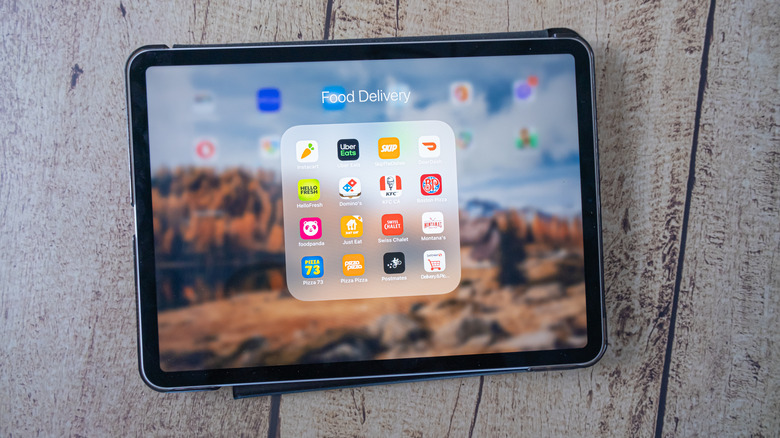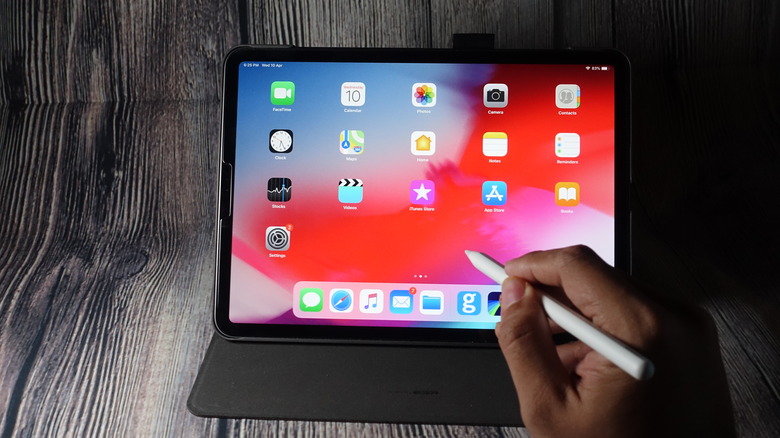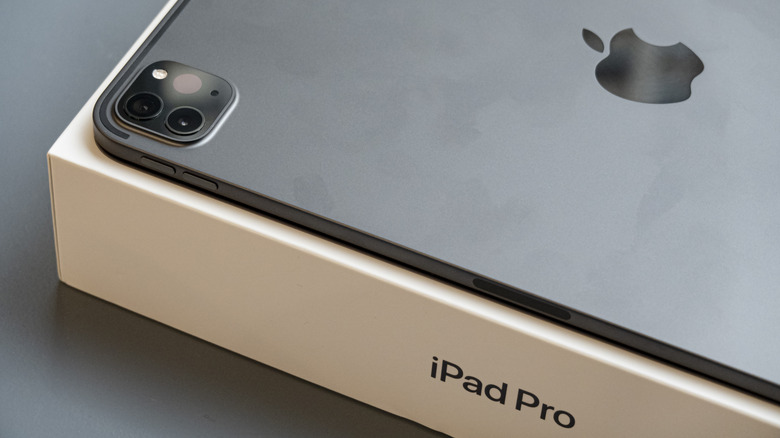What We Expect From Apple's 2024 OLED iPad Pro: Details And Expected Release Date & More
The last time Apple updated its iPad Pro series — the company's flagship tablet lineup — was in October 2022 when it announced the sixth generation iPad Pro models. These tablets were powered by Apple's (then) new M2 chips and featured incremental upgrades over the fifth-generation models. Like before, Apple offered the 2022 M2 iPad Pro models in 11-inch and 12.9-inch display models, with both sizes also getting separate Wi-Fi-only and Wi-Fi + Cellular options.
Now that Apple's newer M3 chips — announced back in October 2023 — are already here, the company is reportedly on the verge of upgrading the iPad Pro lineup with the updated chips. However, if we are to believe rumors from credible sources, Apple's M3 chip is not the only major update that the 2024 iPad Pro models are set to receive this time around. Tim Cook and company are reportedly planning to give the iPad Pro lineup a major display upgrade with the seventh generation iPad Pros.
Most rumors indicate that the 2024 iPad Pro will finally get an OLED panel. Those keeping track of iPad-centric news may be well aware of the fact that rumors of the iPad Pro series getting an OLED panel have been going around for a long time now, with SlashGear reporting on that possibility on two separate occasions, once in 2020 and the second time, in 2021. What's different this time around is that reports of these products getting an OLED panel come from credible sources with better track records reporting on Apple-specific rumors.
While some reports indicated a March 26 announcement for the iPad Pro lineup, Mark Gurman has refuted those claims. However, he maintains that these tablets would still be launched within the March or April timeframe.
2024 OLED iPad Pro: What we know so far
It was in January 2023 — well over a year ago — Bloomberg's Mark Gurman, notable for his near-accurate Apple predictions, claimed that Apple could give the OLED treatment to the future M3-powered 2024 model iPad Pro. Back then, he also claimed that both the iPad Pro models may also feature a refreshed design.
Previously, Gurman had also indicated the possibility of the iPad Pro getting a glass back, opening up the possibility of wireless charging. However, those plans did not materialize, but there is a possibility that a glass-back toting, wireless charging-enabled iPad Pro could be on the anvil soon.
Another rumor centered around the 2024 iPad Pro lineup is the possibility of the cameras on the devices being repositioned. The front-facing camera on the current iPad Pro models is positioned at the top of the device. The 2024 iPads, on the other hand, may see this camera moved to the sides so that photos and videos can be captured in landscape mode. This speculation is made from a piece of code discovered in iOS 17.4 and has not been backed up by other credible sources.
More recent rumors, albeit from less accurate sources, indicate the likelihood of Apple offering the iPad Pro models in both glossy and matte screen options. The same source has also claimed that the bezels on the iPad Pro lineup are set to get 15% thinner than the outgoing models. Other rumors centered around the 2024 iPad Pro include the likelihood of it getting a higher storage variant (4TB), and a bevy of refreshed accessories that include a new Magic Keyboard, and a brand new Apple Pencil model.
2024 OLED iPad Pro: What is the big deal with OLED panels?
Most modern-day high-end gadgets — including flagship-grade laptops, Android tablets, and smartphones — have moved on to OLED panels. These panels have inherent advantages over LED panels, ranging from more vibrant colors, wider viewing angles, and lower power consumption to the ability to produce deeper blacks and longer overall screen life. It wouldn't be erroneous to state that OLED screens are now synonymous with flagship-grade and more expensive products.
Even Apple, which was initially hesitant to move to OLED panels, switched its entire smartphone lineup to OLED panels. The only products in Apple's lineup yet to make the switch are the iPad lineup of tablets, and the company's computing products like MacBooks, iMacs, and displays.
One possible reason Apple waited this long to upgrade the iPad Pro lineup's OLED panel was the possibility that these displays would be affected by a phenomenon known as screen burn-in. This issue continues to be a major Achilles heel for OLED panels. The phenomenon refers to the permanent discoloration of a display caused by displaying a static image or text for extended periods.
Over time, though, companies have come up with techniques to minimize the possibility of OLED screen burn-in, and it seems Apple has finally warmed up to the idea of giving the iPad Pro lineup the much-needed OLED upgrade.


